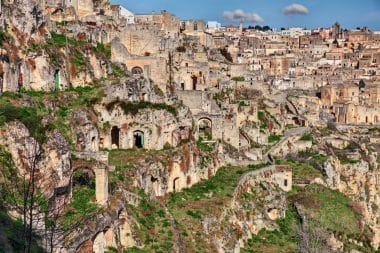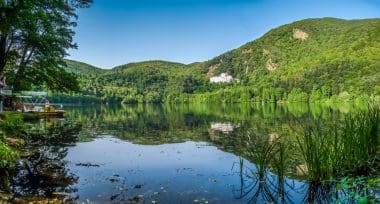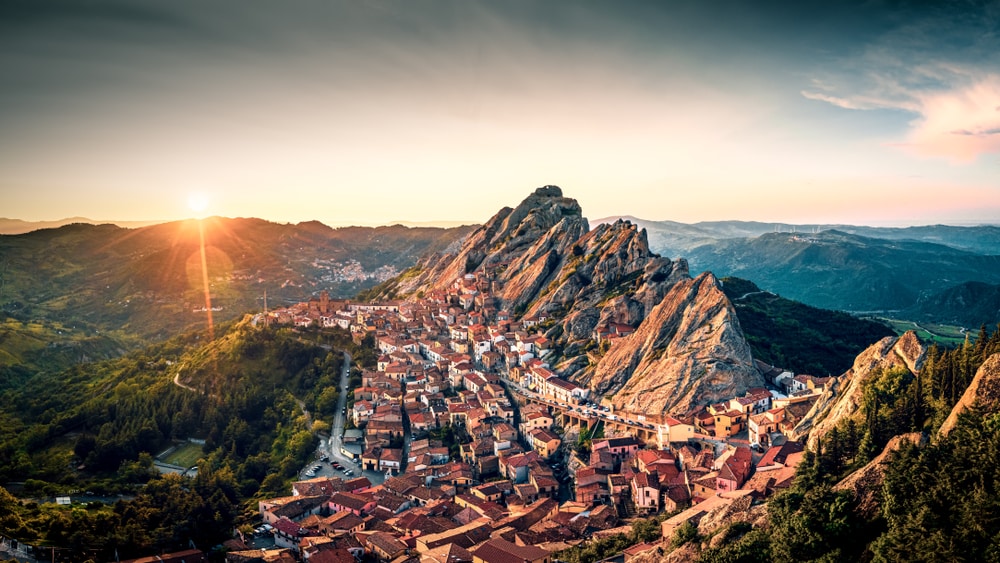The southern Italian region of Basilicata, just like its eastern and southwestern neighboring regions of Puglia and Calabria , has long been overshadowed by more prominent Italian tourist areas, be it the Amalfi Coast belonging to Campania , Tuscany, the Italian Riviera or the popular family holiday resorts on the Adriatic. But more recently, the south of the country has increasingly become the focus of travelers. And rightly so: the Mezziogiorno has so much more to offer than just being “poor but sexy” and thus serving the clichés of holidaymakers from more northern latitudes.
Tart beauty
The poverty traditionally associated with Basilicata is mainly due to its great drought. Agriculture is difficult here. However, it is precisely this aridity, the barren mountain landscapes and the almost desert-like conditions, especially in the east around the city of Matera, that make the region interesting for individual travellers. Backpackers and hiking enthusiasts, mountain bikers, adventure seekers and people who love impressive impressions of nature: all of them get their money’s worth in the Basilicata region. The fact that many parts of the landscape are still largely undeveloped for tourism increases this appeal.
Interesting cities
Potenza and Matera are the two largest cities in Basilicata. While the capital Potenza with its almost 66,000 inhabitants is centrally located in the north of the region, Matera has around 60,000 inhabitants and is located in the east of Basilicata. Unlike the capital, which scores above all with its altitude with spectacular views and its embedding in an attractive mountain landscape, Matera is also of unusual cultural and historical charm. The Roman foundation dating back to 251 BC is located on the slopes of the Murgia highlands and is one of the oldest cities in the world. Architecturally, it represents almost all epochs of its eventful history. From antiquity to the Middle Ages, the Renaissance and modern times, you can admire their testimonies in the city centre.
Fascinating World Heritage Site

Of particular note are Matera di Sassi, a cave settlement that was inhabited until the 20th century. Originally, people lived here in natural grottos and caves of soft tuff, which they developed into living caves over centuries. Eventually, a complete city was created with narrow streets, small squares on the roofs and rock churches. It was not until the 20th century that the Sassi were dissolved because the Italian government no longer wanted to tolerate the poor hygienic conditions for the inhabitants. People were ashamed of the fact that there were still people in the Republic of Italy who lived in “caves”. It was not until the 1980s and 1990s that a rethink began. The Sassi was placed under monument protection and began to be restored. Since 1993, they have been a UNESCO World Heritage Site.
Hiking and experiencing nature

The interior of Basilicata is determined by the mountain range of the Apennines, which runs right through the region. Despite the already mentioned overall great drought, you will surprisingly also find lush green forests here. Mont Vulture, a now extinct volcano, is located north of Potenza and has provided fertile lava soil. Inland there are extensive nature reserves such as the youngest national park in Italy, the Parco Nazionale dell’Appennino Lucano-Val d’Agri-Lagonegrese. It encloses several interesting biotopes with beech and coniferous forests, meadows and pastures. Even outside the protected zones, in the natural areas cultivated by human hands, the fertile lava soil has provided a lush flora. Around Mont Vulture there are beautiful olive groves and vineyards – a diverse landscape that always offers new impressions and also offers extremely inspiring motifs for photographers and amateur filmmakers.
Swimming and enjoying the sea
But the Basilicata region also has a special charm for those who are attracted to water. Located between the Gulf of Policastro, which is part of the Tyrrhenian Sea, and the Gulf of Taranto on the Ionian Sea, the region is an El Dorado for coastal lovers. The coastal strip along the Gulf of Policastro is harsh and wild with steep cliffs and deeply cut bays. On the Gulf of Taranto, on the other hand, there is fine sand and shallow sandy beaches for sun worshippers and family vacationers. The water is crystal clear and known for its high quality. You can also find beaches with black sand – due to the lava ash – for example the very beautiful “Spiagga Nera” near Maratea. Maratea is another city in Basilicata that is worth seeing. In addition to the beautiful beaches, one of its highlights is the huge statue of Christ the Redeemer, which towers over the city from an imposing vantage point.
Specialties from the kitchen and wine cellar
Everywhere in the region, whether in cities or small villages, you can eat easily and well. “Fresh and local” – this kitchen credo, which once stood for traditional, peasant dishes, has now also conquered international star cuisine. A region for connoisseurs, where you can always get fresh vegetables, wine and olives from local production, as well as delicious fresh fish and seafood near the coast.


